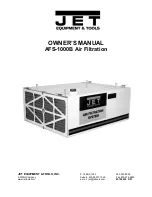
7
513 01 3103 00
ACCESS PANELS MUST BE IN PLACE WHEN RIGGING.
PANNEAUX D'ACCES DOIT ÊTRE EN PLACE POUR MANIPULATION.
50CY502286 2.0
CAUTION - NOTICE TO RIGGERS
PRUDENCE - AVIS AUX MANIPULATEUR
Use top skid as spreader bar. / Utiliser la palette du haut comme barre de répartition
SEAL STRIP MUST BE IN
PLACE BEFORE PLACING
UNIT ON ROOF CURB
DUCTS
DETAIL A
VOIR DÉTAIL A
MINIMUM HEIGHT: 36" (914.4 mm)
HAUTEUR MINIMUM
UNIT HEIGHT
HAUTEUR D'UNITÉ
SEE DETAIL A
VOIR DÉTAIL A
BANDE SCELLANT DOIT ÊTRE
EN PLACE AVANT DE PLACER
L'UNITÉ SUR LA BASE DE TOIT
FIG. 7 -- RIGGING WEIGHTS
CORNER WEIGHTS (SMALL CABINET)
CORNER WEIGHTS (LARGE CABINET)
Unit
24
30
36
Unit
42
48
60
lb
kg
lb
kg
lb
kg
lb
kg
lb
kg
lb
kg
Rigging Weight
279
127
284
129
290
132
Rigging Weight
378
171
384
174
406
184
*For 460 Volt units add 14 lb (6.35 kg) to the rigging weight.
NOTE: See dimensional drawing for corner weights.
Rigging/Lifting of Unit (See Fig. 6.)
UNIT FALLING HAZARD
Failure to follow this warning could result in personal
injury or death.
Large base units must be secured to common curb
before allowing full weight of unit to rest on curb. Install
screws through curb into unit base rails while rigging
crane is still supporting unit.
!
WARNING
Lifting holes are provided in base rails as shown in Fig. 4 and 5.
1. Leave top shipping skid on the unit for use as a spreader
bar to prevent the rigging straps from damaging the unit. If
the skid is not available, use a spreader bar of sufficient
length to protect the unit from damage.
2. Attach shackles, clevis pins, and straps to the base rails of
the unit. Be sure materials are rated to hold the weight of
the unit. (See Fig. 7).
3. Attach a clevis of sufficient strength in the middle of the
straps. Adjust the clevis location to ensure unit is lifted level
with the ground.
After the unit is placed on the roof curb or mounting pad, remove
the top skid.
Step 6 — Provide for Condensate Disposal
NOTE
: When installing condensate drain connection be sure to
comply with local codes and restrictions.
Unit disposes of condensate water through a 3/4 in. NPT fitting
which exits through the base on the evaporator coil access side.
See Fig. 4 & 5 for location.
Condensate water can be drained directly onto the roof in rooftop
installations (where permitted) or onto a gravel apron in ground
level installations. Install a field--supplied 2--in. (51 mm)
condensate trap at end of condensate connection to ensure
proper drainage. Make sure that the outlet of the trap is at least 1
in. (25 mm) lower than the drain pan condensate connection to
prevent the pan from overflowing (See Fig. 8). When using a
gravel apron, make sure it slopes away from the unit.
Connect a drain tube using a minimum of 3/4 --in. PVC or 3/4 --in.
copper pipe (all field--supplied) at the outlet end of the 2--in. (51
mm) trap. Do not undersize the tube. Pitch the drain tube
downward at a slope of at least 1--in. (25 mm) for every 10 ft (3.1
m) of horizontal run. Be sure to check the drain tube for leaks.
Prime trap at the beginning of the cooling season start--up.
TRAP
OUTLET
1-in. (25 mm) min.
2-in. (51 mm) min.
FIG. 8 -- CONDENSATE TRAP
Step 7 — Install Duct Connections
The design and installation of the duct system must be in
accordance with the standards of the NFPA for installation of
non--residence type air conditioning and ventilating systems,
NFPA 90A or residence--type, NFPA 90B and/or local codes and
ordinances.








































